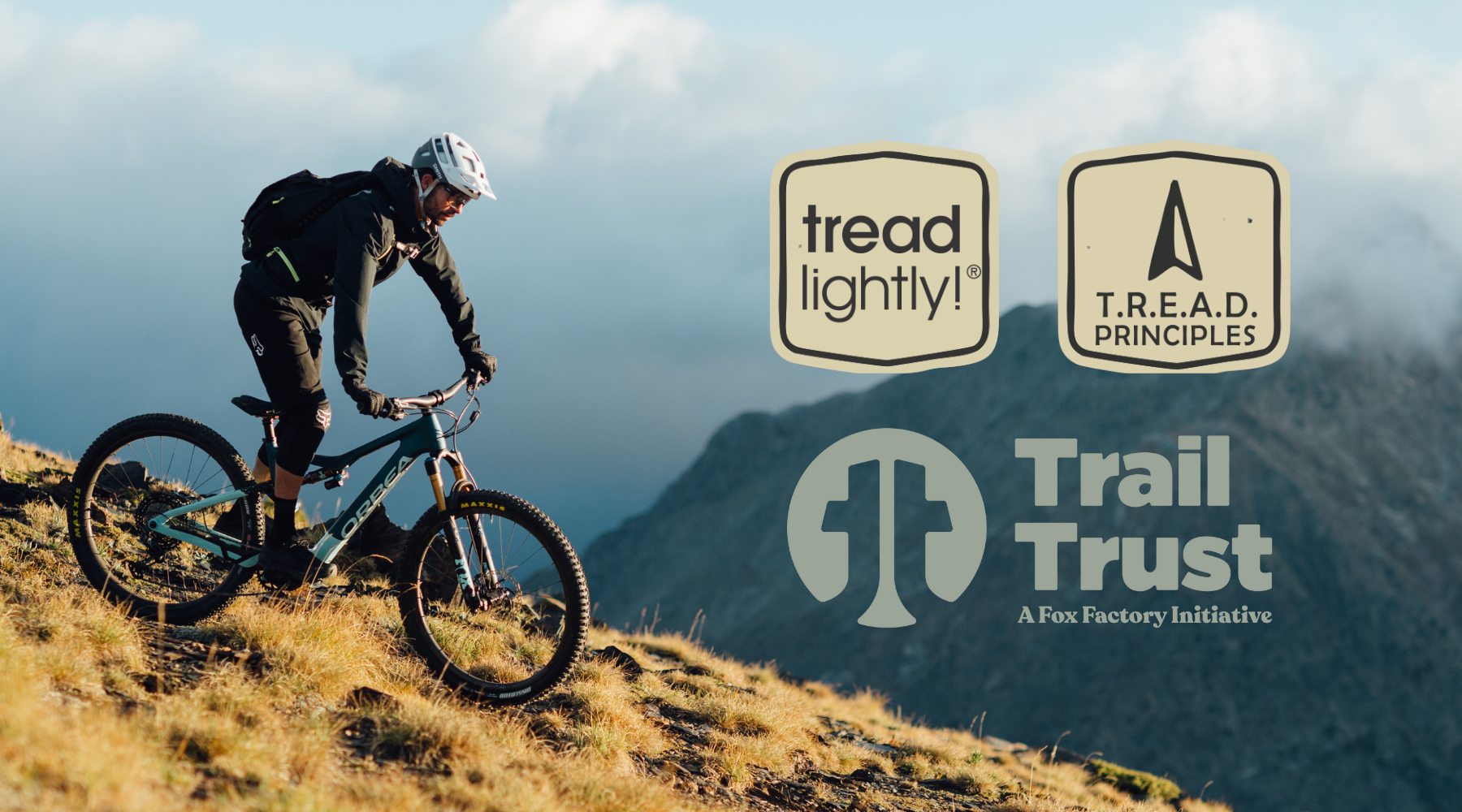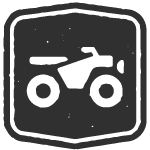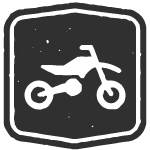

TIPS FOR RESPONSIBLE E-BIKING

TRAVEL RESPONSIBLY
Travel responsibly on designated roads and trails or in permitted areas.
- Avoid trails that are obviously wet and muddy.
- Cross streams slowly, at a 90-degree angle to the stream.
- When climbing, use a gear that provides comfortable momentum and maintains traction.
- When descending, avoid locking your bike’s wheels, which gouges the trail.
- Ride in the middle of the trails to minimize widening of the trails. Avoid sideslipping, which can lead to erosion.
- Slow down when sight lines are poor.
- Maintain a reasonable distance between you and your fellow riders.
- Make your presence known when approaching others and going around blind corners.
- Comply with all signs and respect barriers.
- Buddy up with two or three riders, reducing vulnerability if you have an accident or breakdown.
- Listening to headphones or ear buds can make it difficult to hear and communicate with other recreationists. In some areas it is illegal to operate bikes with both ears covered.
- Don’t mix riding with alcohol or drugs.
RESPECT THE RIGHTS OF OTHERS
Respect the rights of others, including private property owners, all recreational trail users, campers and others so they can enjoy their recreational activities undisturbed.
- Be considerate of others on the road or trail.
- Leave gates as you find them.
- If crossing private property, be sure to ask permission from the landowner(s).
- Yield the right of way to those passing you or travelling uphill.
- Proceed with caution around pack animals. Sudden, unfamiliar activity may spook animals, possibly causing injury to animals, handlers, and others on the trail.
- When encountering horses on the trail, move to the side of the trail, stop, remove your helmet and speak. You want the horse to know you are human. Ask the rider the best way to proceed.
- Keep the dust down.
EDUCATE YOURSELF
Educate yourself prior to your trip by obtaining travel maps and regulations from public agencies, planning for your trip, taking recreation skills classes and knowing how to operate your equipment safely.
- Obtain a map of your destination and determine which areas are open to E-bikes.
- Make a realistic plan and stick to it. Always tell someone of your travel plans.
- Contact the land manager for area restrictions, closures and permit requirements.
- Check the weather forecast.
- Be sure your E-bike is properly maintained.
- Prepare for the unexpected by carrying emergency items.
- Wear a helmet, eye protection, and other safety gear.
AVOID SENSITIVE AREAS
Avoid sensitive areas such as meadows, lakeshores, wetlands and streams, unless on designated routes.
- Other sensitive habitats to avoid, unless on designated routes, include cryptobiotic soils of the desert, tundra and seasonal nesting or breeding areas.
- Do not disturb historical, archeological or paleontological sites.
- Avoid “spooking” livestock and wildlife you encounter and keep your distance.
- Motorized and mechanized vehicles are not allowed in designated Wilderness Areas.
DO YOUR PART
Do your part by modeling appropriate behavior, leaving the area better than you found it, properly disposing of waste, minimizing the use of fire, avoiding the spread of invasive species and restoring degraded areas.
- Carry a trash bag on your bike and pick up litter left by others.
- Pack out what you pack in.
- Practice minimum impact camping by using established sites and camping 200 feet from water resources and trails.
- Observe proper sanitary waste disposal or pack your waste out.
- Before and after a ride, wash your E-bike and support vehicle to reduce the spread of invasive species.
- Build a trail community. Get to know other types of recreationists that share your favorite trail.
Get more in-depth E-biking information by visiting Fox Factory a F0x Factory and Trail Trust.















